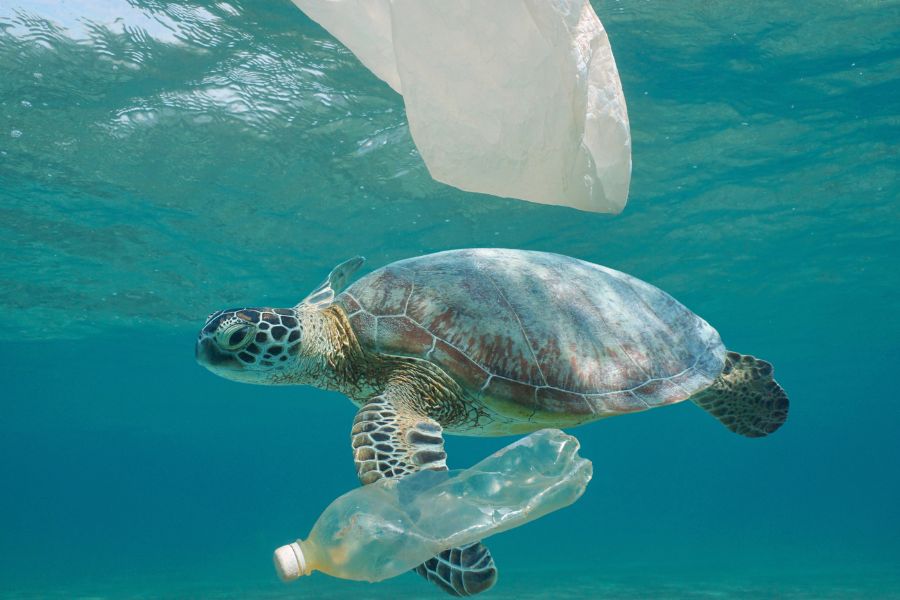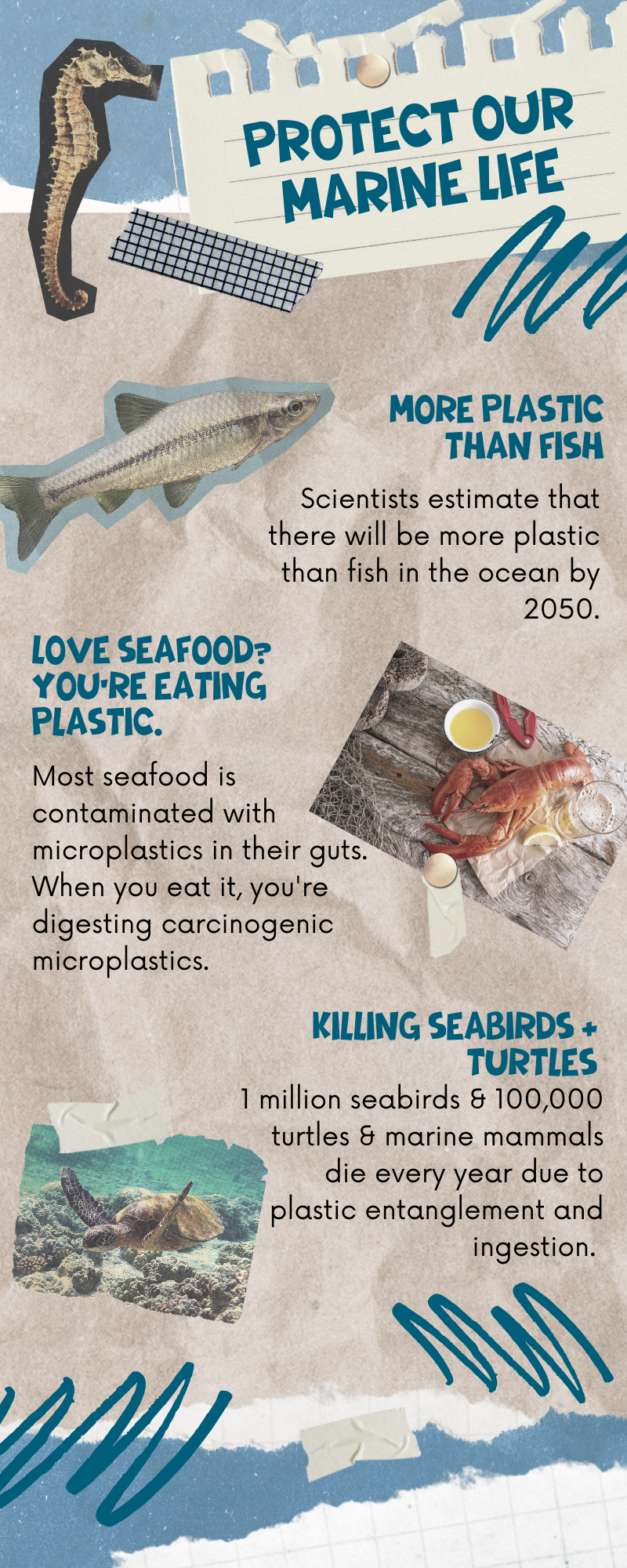Marine animals bear the burden of the SUPs influx of plastic waste into their habitats. For instance, whales have been found with stomachs full of plastic trash. Studies also show that SUPs are found in the guts of 90% of the seabirds and 100% of the turtles tested. Scientists estimate that there will be more plastic than fish in the ocean by 2050 (Lindwall, 2020).
More than 800 marine species, including 15 classified as endangered, are affected by the plastic waste in the environment (Vuleta, 2022).
About 1 million seabirds (which corresponds to half of all seabird species on the planet) and 100,000 turtles and marine mammals die due to plastic entanglement and ingestion of debris every year. Seabirds are among the most endangered bird species worldwide, and therefore, ingesting plastic waste accelerates the possibility of seabird extinction. Statistics show that plastic pollution affects 100% of sea turtles, 59% of whales, and 35% of seals (Vuleta, 2022).
SUPs are estimated to harm not only marine animals and seabirds, but also humans. Seafood is contaminated with microplastics in the sea creatures' guts. When humans eat seafood, they are indirectly ingesting microplastics as well, which are carcinogenic and can cause cancer, amongst other health impacts (Lindwall, 2020).



